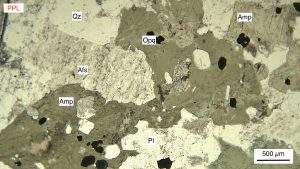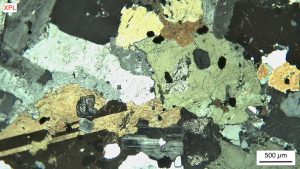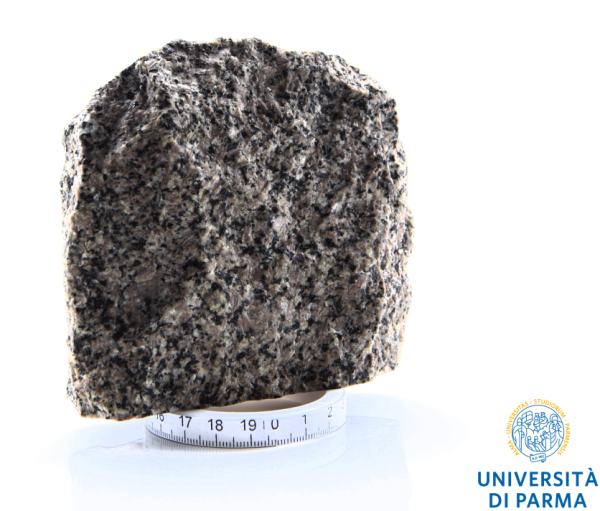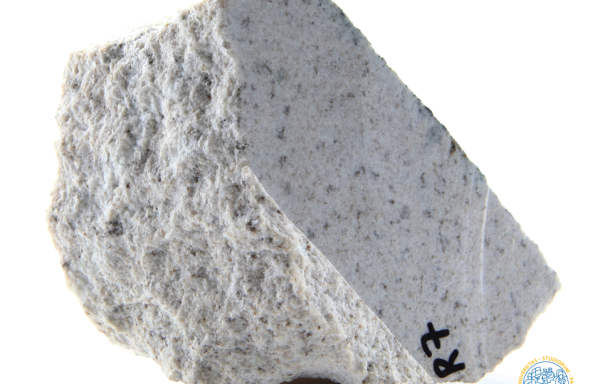Rock
Medium- to coarse-grained rock with individual crystal grains visible to the naked eye (phaneritic texture): plagioclase (milky white); alkali feldspar (pink); amphibole (dark green). The rock sample comes from the syenitic portion of the Biella pluton, emplaced in the Oligocene (31-30 Ma) in the Western Alps (North Italy). The Biella pluton, that also includes monzonites and granites, is coeval with the nearby Traversella pluton (see the “monzodiorite (DI-VC)” sample); these igneous bodies are encased into the Sesia-Lanzo metamorphic rocks (see metamorphic rocks), to the NW of the Insubric Fault (Ji et al., 2019; DOI: 10.1111/ter.12377). The syenite (known as syenite of Balma) has been utilized over long periods of time as building and ornamental stone all over the world (e.g., the base of the Statue of Liberty in New York is made of this rock).
Etymology: the term syenite derive from Syene (now Aswan) in Egypt.
Thin section description:
The image in PPL view is occupied by colourless and coloured areas. The perfectly colourless areas are quartz (Qz). The colourless areas with a variously dusty aspect are feldspar crystals altered to an aggregate of fine-grained white mica (sericite): alkali feldspar (Afs) crystals are almost completely dusty, whereas plagioclase (Pl) crystals exhibit only small dusty portions. The Afs and Pl crystals can be identified in the XPL view when the crystals exhibit distinctive twinning (the Afs and Pl crystals indicated in the PPL imagine show Carlsbad twinning and the multiple Albite twinning, respectively). The coloured crystals in PPL, showing a dark to pale green colour or a pale brown colour (pleochroism) are amphibole (Amp) crystals (hornblende type). Few Amp are cut in the orientation to show the distinctive cleavages (two cleavages intersecting at 120°). The large Amp crystal at the lower left of the field of view is twinned in XPL view. The small black areas in PPL view are occupied by opaque minerals (Opq).
| PPL thin section |
XPL thin section |
 |
 |
Map
PPL
XPL
Info
| Place: | Cava Vei della Balma San Paolo Cervo (Biella) |
| Classification: | syenite |
| Specimen n°: | S-B |




